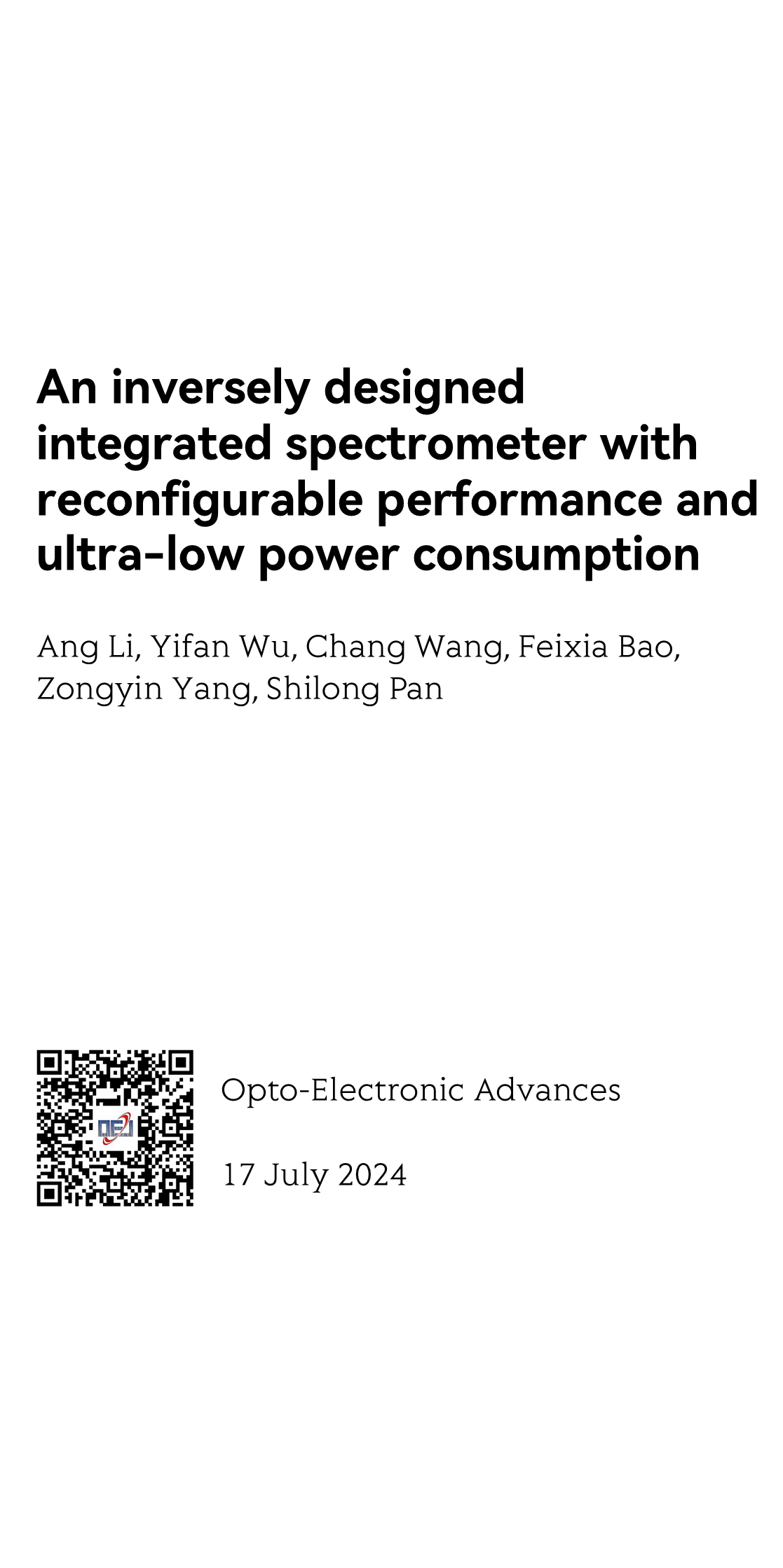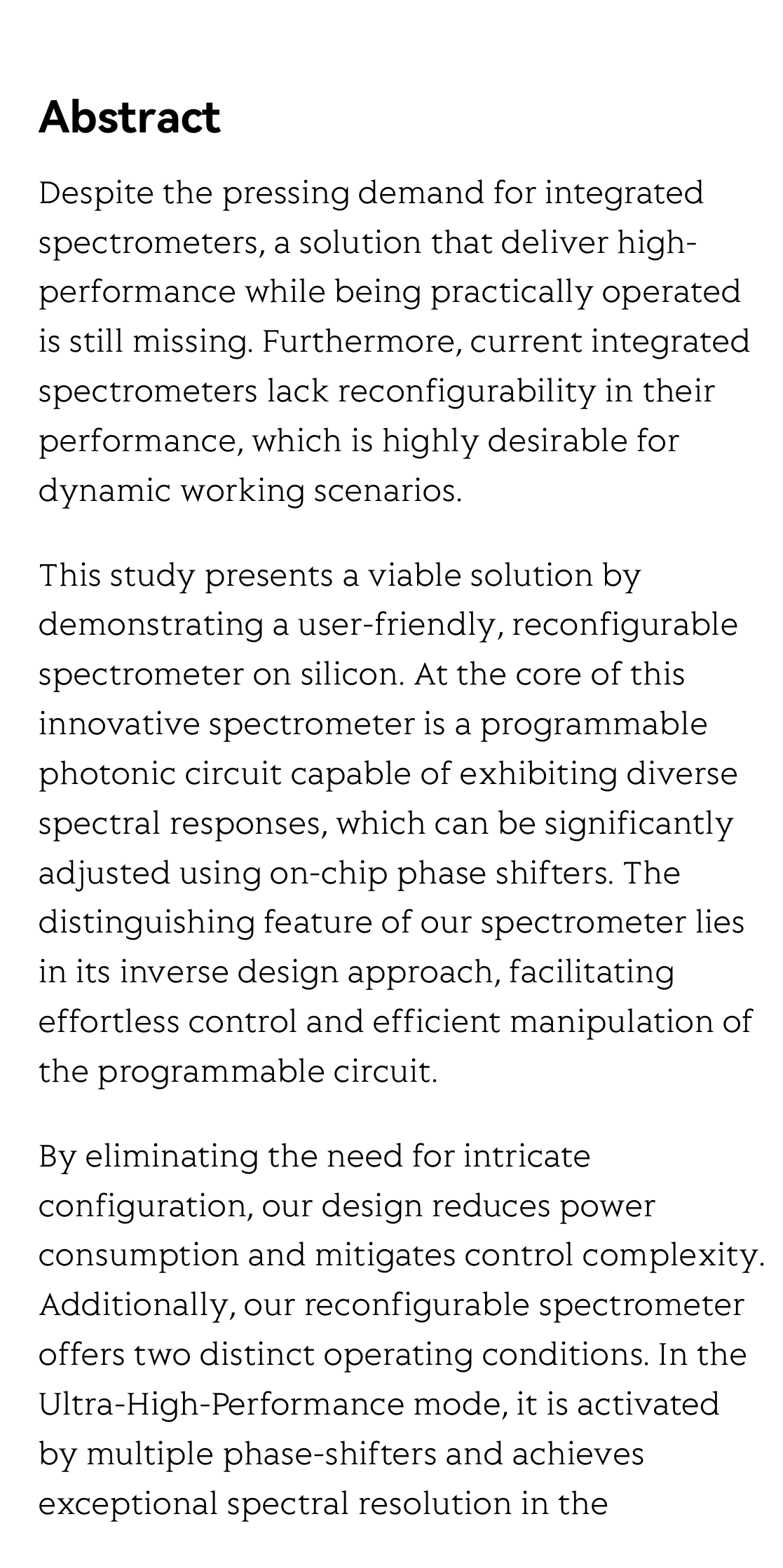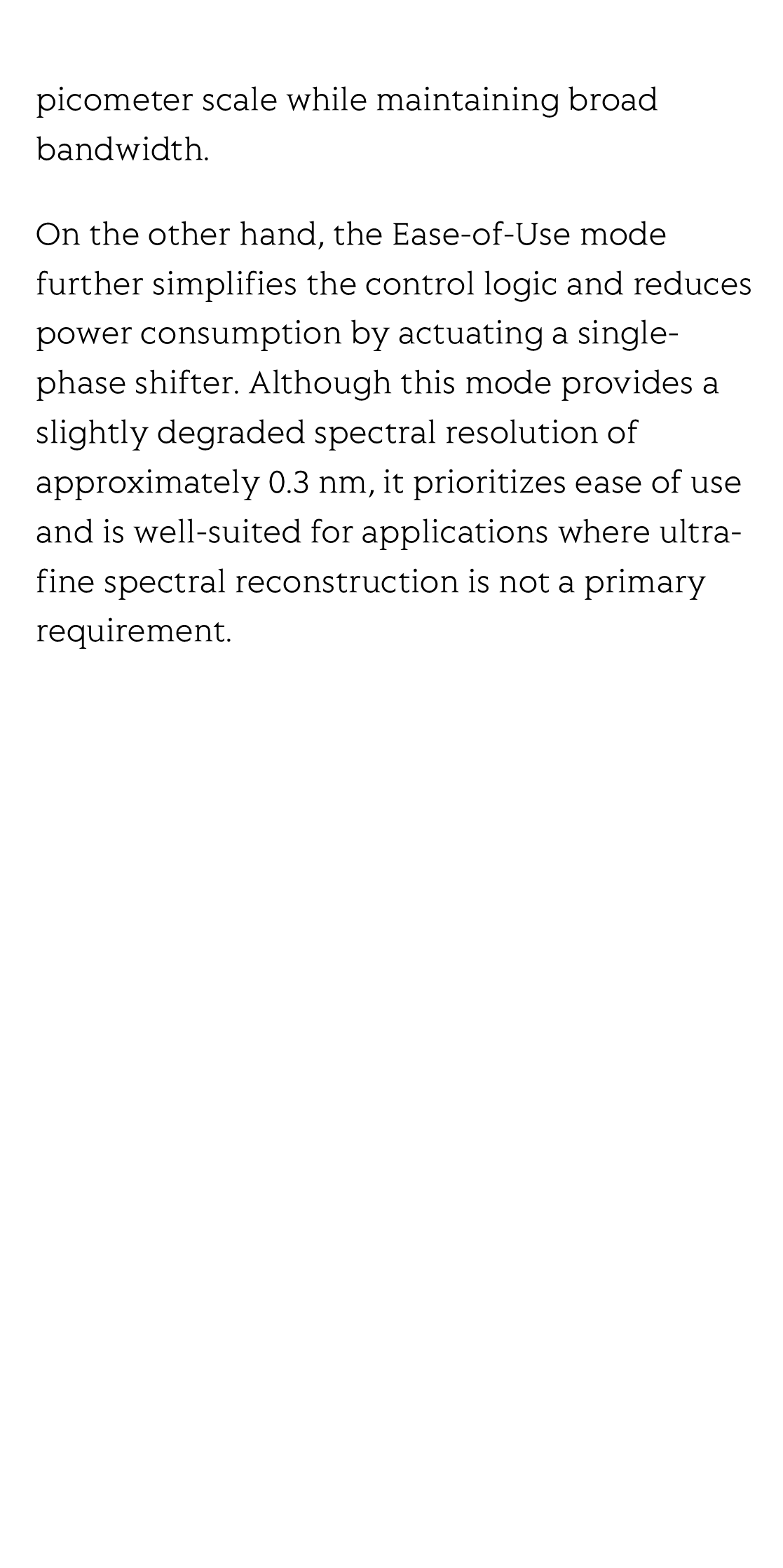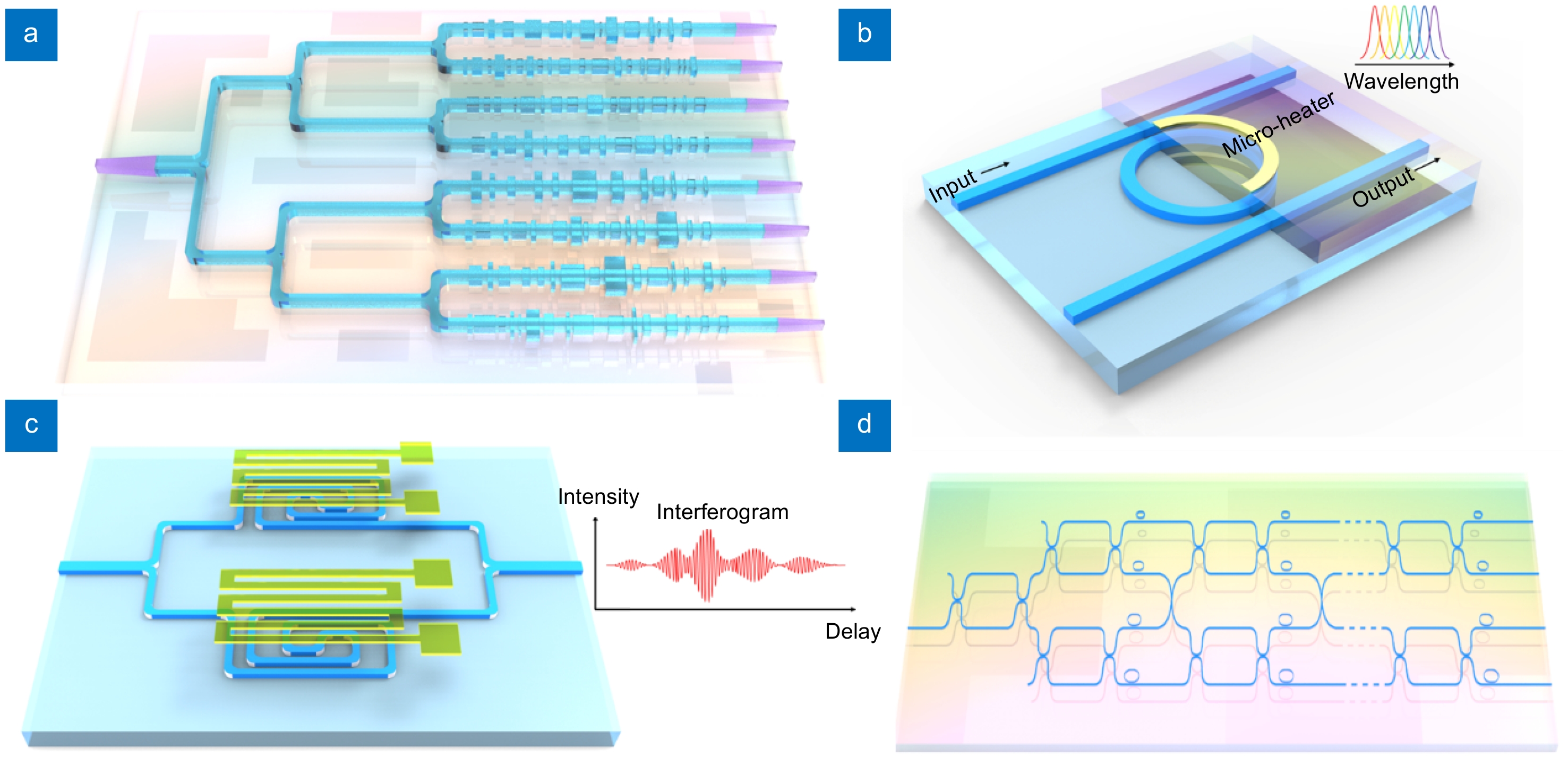(Peer-Reviewed) An inversely designed integrated spectrometer with reconfigurable performance and ultra-low power consumption
Ang Li 李昂 ¹ ², Yifan Wu 吴怡凡 ¹, Chang Wang 王畅 ¹, Feixia Bao 包飞霞 ¹, Zongyin Yang 杨宗银 ³, Shilong Pan 潘时龙 ¹
¹ National Key Laboratory of Microwave Photonics, Nanjing University of Aeronautics and Astronautics, Nanjing 210016, China
中国 南京 南京航空航天大学 微波光子技术国家级重点实验室
² Key Lab of Modern Optical Technologies of Education Ministry of China, Soochow University, Soochow 100006, China
中国 苏州 苏州大学 教育部现代光学技术重点实验室
³ College of Information Science and Electronic Engineering, Zhejiang University, Hangzhou 310058, China
中国 杭州 浙江大学 信息与电子工程学院
Opto-Electronic Advances
, 2024-07-17
Abstract
Despite the pressing demand for integrated spectrometers, a solution that deliver high-performance while being practically operated is still missing. Furthermore, current integrated spectrometers lack reconfigurability in their performance, which is highly desirable for dynamic working scenarios.
This study presents a viable solution by demonstrating a user-friendly, reconfigurable spectrometer on silicon. At the core of this innovative spectrometer is a programmable photonic circuit capable of exhibiting diverse spectral responses, which can be significantly adjusted using on-chip phase shifters. The distinguishing feature of our spectrometer lies in its inverse design approach, facilitating effortless control and efficient manipulation of the programmable circuit.
By eliminating the need for intricate configuration, our design reduces power consumption and mitigates control complexity. Additionally, our reconfigurable spectrometer offers two distinct operating conditions. In the Ultra-High-Performance mode, it is activated by multiple phase-shifters and achieves exceptional spectral resolution in the picometer scale while maintaining broad bandwidth.
On the other hand, the Ease-of-Use mode further simplifies the control logic and reduces power consumption by actuating a single-phase shifter. Although this mode provides a slightly degraded spectral resolution of approximately 0.3 nm, it prioritizes ease of use and is well-suited for applications where ultra-fine spectral reconstruction is not a primary requirement.
Flicker minimization in power-saving displays enabled by measurement of difference in flexoelectric coefficients and displacement-current in positive dielectric anisotropy liquid crystals
Junho Jung, HaYoung Jung, GyuRi Choi, HanByeol Park, Sun-Mi Park, Ki-Sun Kwon, Heui-Seok Jin, Dong-Jin Lee, Hoon Jeong, JeongKi Park, Byeong Koo Kim, Seung Hee Lee, MinSu Kim
Opto-Electronic Advances
2025-09-25
Dual-frequency angular-multiplexed fringe projection profilometry with deep learning: breaking hardware limits for ultra-high-speed 3D imaging
Wenwu Chen, Yifan Liu, Shijie Feng, Wei Yin, Jiaming Qian, Yixuan Li, Hang Zhang, Maciej Trusiak, Malgorzata Kujawinska, Qian Chen, Chao Zuo
Opto-Electronic Advances
2025-09-25







